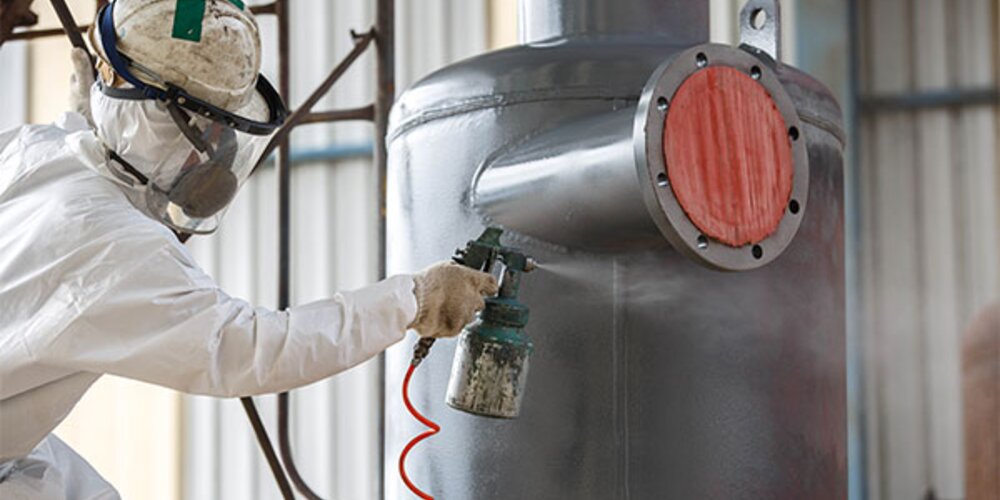Researchers Develop ‘Pigment Free’ Paint

A team of researchers at the NanoScience Technology Centre at the University of Central Florida (UCF) have invented what they have called ‘plasmonic paint’, a type of paint that is free from pigments.
What is plasmonic paint?
So, what exactly is this breakthrough? According to Debashis Chanda, a professor at UCF and lead researcher on this project, plasmonic paint is based on the principles of light absorption as well as light reflection and scattering.
Avoiding the use of pigments, plasmonic paint possesses a nanostructure made up of nanoscale aluminium and aluminium oxide, which are geometrically-arranged. When mixed with a commercial binder, the nanostructure is able to produce paints of different hues.
This new approach can be referred to as ‘structural colour’.
This approach is remarkably similar to the way in which fauna and flora in nature are able to display a range of attractive hues. By using the geometric arrangement of colourless materials to reflect and scatter light, creatures as varied as butterflies to birds are able to present a distinct colour to the world.
As Chanda explains, “The range of colours and hues in the natural world are astonishing - from colourful flowers, birds and butterflies to underwater creatures like fish and cephalopods. Structural colour serves as the primary colour-generating mechanism in several extremely vivid species, where geometrical arrangement of typically two colourless materials produces all colours. On the other hand, with man made pigment, new molecules are needed for every colour present”.
What are the benefits of plasmonic paint?
As you may have picked up from Chanda’s comment above, plasmonic paint is claimed to have a number of benefits over and above traditional pigment-based paints.
Firstly, plasmonic paint is claimed to be far more environmentally friendly than pigment-based paints. This is because plasmonic paint only makes use of metals and oxides, whereas pigment-based paints require artificially synthesised molecules.
This results in a paint that lasts much longer. As Chanda comments, “normal colour fades because pigment loses its ability to absorb photons. Here, we’re not limited by that phenomenon. Once we paint something with structural colour, it should stay for centuries”.
Whilst this may not be good for commercial paint producers, it’ll certainly help to reduce resource consumption and lower the carbon footprint associated with paint production.
Secondly, plasmonic paint has the benefit of reflecting heat. Because it reflects the entire infrared spectrum, plasmonic paint absorbs less heat than traditional paint. This means that any surface painted with plasmonic paint will stay 25 to 30 degrees Fahrenheit cooler than if it were painted in traditional pigment-based paint.
Professor Chanda explains; “over 10% of electricity in the U.S. goes toward air conditioner usage. The temperature difference plasmonic paint promises would lead to significant energy savings. Using less electricity for cooling would also cut down carbon dioxide emissions, lessening global warming”.
Thirdly, plasmonic paint has the benefit of being lightweight, with a large area-to-thickness ratio. This means only small amounts of plasmonic paint need to be used to paint large surface areas. The example provided by the UCF research team is stark:
‘The paint is so lightweight that only about 3 pounds of plasmonic paint would cover a Boeing 747, which normally requires more than 1,000 pounds of conventional paint’.
Does plasmonic paint represent the future of paint and coatings?
Whilst the development of plasmonic paint is exciting and has the potential to generate many benefits, it appears to be far too early to be drawing conclusions about its broader application.
Chanda has outlined what he sees as the next steps for this nascent paint technology:
“The conventional pigment paint is made in big facilities where they can make hundreds of gallons of paint. At this moment, unless we go through the scale-up process, it is still expensive to produce at an academic lab”.
Do you need support with paint and coatings?
The Lab, and its parent company Brookes Bell can provide a range of proactive and reactive services, covering every part of a paint or coating’s lifecycle.
Proactive paint and coatings support
Are you in the early stages of a paint or coating project? Then Brookes Bell’s paint and coatings specialists can help.
They can assist you in creating the appropriate specifications for your particular project, allowing you to select the correct paints and coatings from leading brands.
Our paint and coatings specialists can also support with antifouling and biofouling issues, advising on the paints and coatings that’ll minimise these issues.
Reactive paint and coatings support
Should the worst have happened, and you are experiencing issues with a paint or coating, then The Lab can provide the answers you need to reach a successful resolution.
Our scanning electron microscope (SEM), optical microscopy and lab equipment including FT-IR can help determine the cause of a paint or coating failure, determine the composition of paints and coatings and more.
Whether you need proactive or reactive paint and coatings support, speak to Brookes Bell today
For more materials science, materials testing and inspection insights and news, explore The Lab’s News and Knowledge Hub…
Has the Secret of ‘Self-Healing’ Roman Concrete Been Revealed? | Glossary of Metallurgy Terminology | World’s First Spiral-Welded Wind Tower Begins Operation
- Author
- Dr Holly Edwards
- Date
- 28/03/2023
